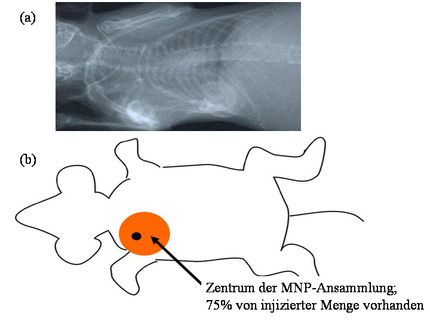Magnetic nanoparticles to simultaneously diagnose, monitor and treat
Whether it's magnetic nanoparticles (mNPs) giving an army of 'therapeutically armed' white blood cells direction to invade a deadly tumour's territory, or the use of mNPs to target specific nerve channels and induce nerve-led behaviour (such as the life-dependant thumping of our hearts), mNPs have come a long way in the past decade.
The future for mNPs however appears even brighter. With the design of 'theranostic' molecules, mNPs could play a crucial role in developing one-stop tools to simultaneously diagnose, monitor and treat a wide range of common diseases and injuries.
Multifunctional particles, modelled on viral particles such as the flu and HIV, are being researched and developed to carry signal-generating sub-molecules and drugs, able to reach target areas through a safe sprinkling of tiny mNPs and external magnetic forces, creating a medical means to confirm specific ailments and automatically release healing drugs while inside a living system.
A selection of review articles published in Journal of Physics D: Applied Physics, 'Progress in Applications of Magnetic Nanoparticles in Biomedicine', shows just how far magnetic nanoparticles for application in biomedicine have come and what exciting promise they hold for the future.
The magnetic component of the direction-giving nanoparticles is usually an iron-based compound called ferric oxide which is coated in a biocompatible surface, sometimes using, for example, fatty acids, to provide stability during the particles journey through one's body. For biomedicine, the particles are useful because you can add specific signal triggering molecules to identify certain conditions, or dyes to help in medical imaging, or therapeutic agents to remedy a wide-range of afflictions.
Already well documented, mNPs have sparked interest after being attached to stem cells and used in vivo to remedy heart injury in rats. On humans, in 2007, Berlin's Charité Hospital used a technique which involved mNPs, called hyperthermia, to destroy a particularly severe form of brain cancer in 14 patients. The technique, utilising well-tested knowledge that tumour cells are more sensitive to temperature increases than healthy cells, uses mNPs to direct nano-heaters towards the inoperable tumours and, essentially, cook them to death.
Dr Catherine Berry, one of the review paper's authors from the Centre for Cell Engineering in Glasgow, writes, "One of the main forerunners in the development of multifunctional particles for theranostics is magnetic nanoparticles. Following recent advances in nanotechnology, the composition, size, morphology and surface chemistry of particles can all be tailored which, in combination with their magnetic nanoscale phenomena, makes them highly desirable."
Most read news
Topics
Organizations
Other news from the department science

Get the life science industry in your inbox
By submitting this form you agree that LUMITOS AG will send you the newsletter(s) selected above by email. Your data will not be passed on to third parties. Your data will be stored and processed in accordance with our data protection regulations. LUMITOS may contact you by email for the purpose of advertising or market and opinion surveys. You can revoke your consent at any time without giving reasons to LUMITOS AG, Ernst-Augustin-Str. 2, 12489 Berlin, Germany or by e-mail at revoke@lumitos.com with effect for the future. In addition, each email contains a link to unsubscribe from the corresponding newsletter.






















































